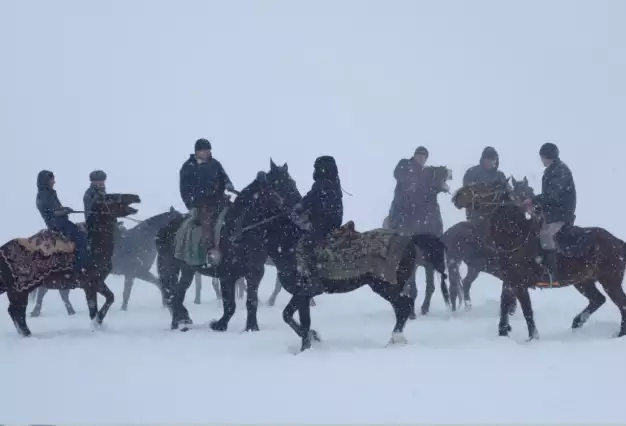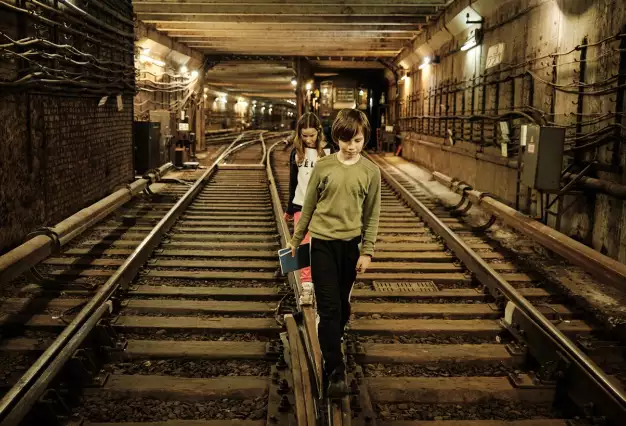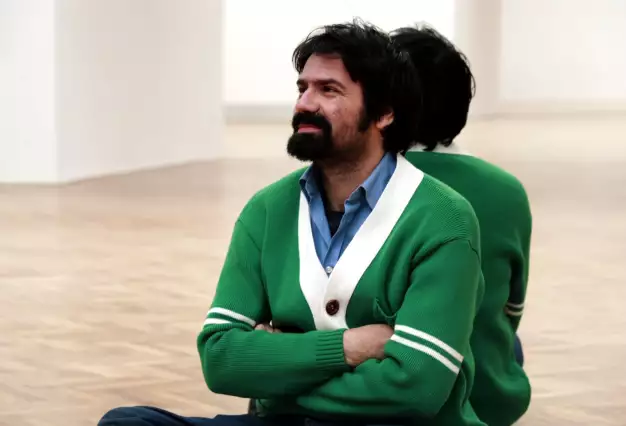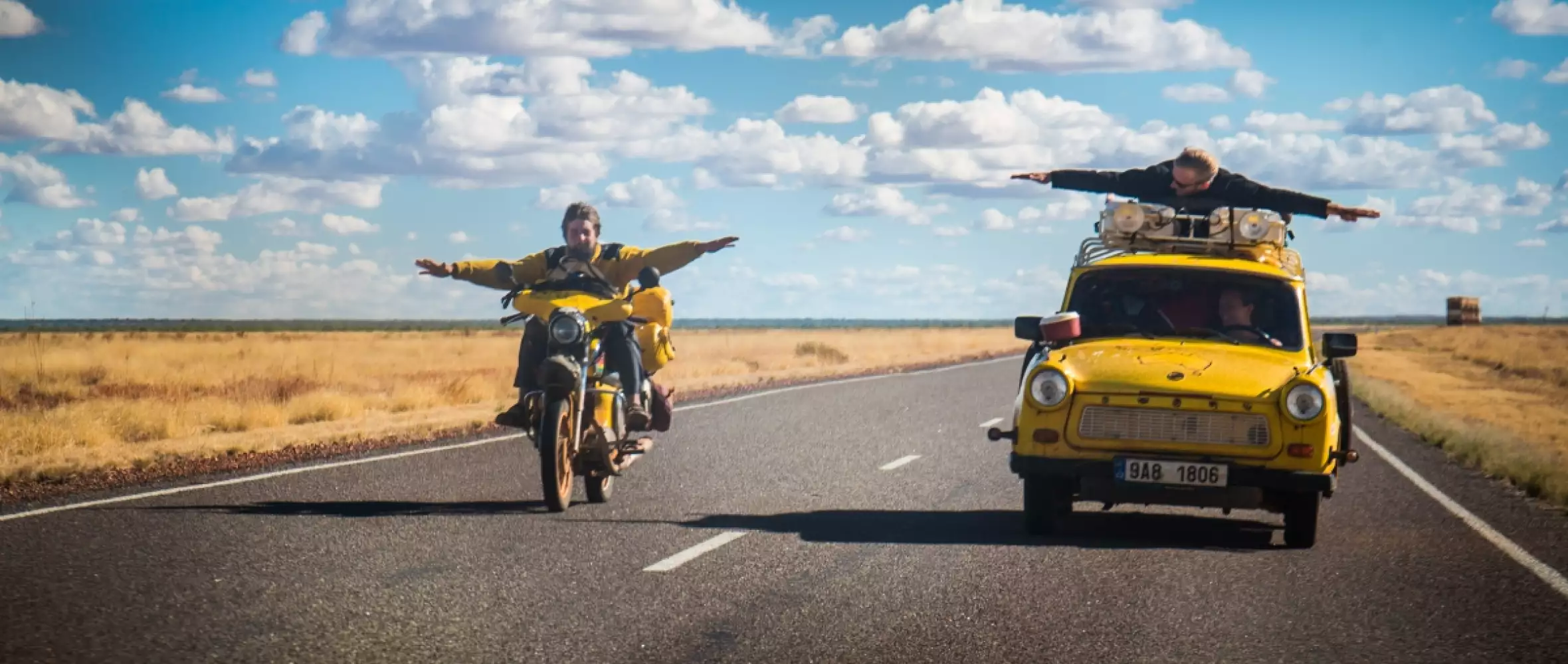
23 October 2016
How to Dream Docudreams
The metamorphosis of Czech documentary filmmaking
How to Dream Docudreams
The metamorphosis of Czech documentary filmmaking

The best contemporary Czech documentaries draw on the country’s humoristic and humanistic traditions. Either that or, just the opposite, they find inspiration in the serious-minded imagery and stories of international art-house cinema, documentary and fiction alike. All in all, there are more self-assured documentaries being made than ever before, with a knack for translating national specifics into an internationally understandable language.
Article by Tomáš Stejskal for Czech Film Magazine / Fall 2016
Some twelve years ago, when posters appeared on the Prague subway advertising a mysterious “Czech Dream", few could sense the approaching change it signaled in Czech documentaries. In Czech Dream (2004), directors Vít Klusák and Filip Remunda used the fake façade of a fictitious hypermarket called Czech Dream to create what was advertised as the first Czech reality-show film.
The movie captured the process of creating a virtual dream, from the concept through marketing to its final clash with reality, as thousands of people streamed through open fields to what they thought was the opening of the ballyhooed hypermarket, only to be enraged when they found nothing but a scaffolding and the pair of prankster filmmakers.
US director Michael Moore praised Czech Dream for its commentary on today’s consumerist reality, while at home the release sparked a new trend in documentary filmmaking. Not that every Czech director suddenly became a practical joker out to fool their fellow citizens. But a significant part of the past decade’s documentaries have combined social engagement with an effort to entertain through situational comedy in which the filmmakers gladly participate as protagonists in front of the camera.
.jpg)
This engaged and subjective approach to nonfiction filmmaking (referred to locally as “auteur documentary”) is strongly influenced by the personality and work of Karel Vachek, head of the documentary department at FAMU. Vachek’s documentary essays — the length of their titles matching the enormity of their scope and range — blend together the avant-garde, politics, poetry, humor, and love of opera and pop music alike. His most recent project, however, bears the simple title Communism, and this past June it took home an award from the FIDlab coproduction platform in Marseille.
Another influential teacher in FAMU’s documentary department, Helena Třeštíková, is known for her long-term observational documentaries René (2008) and Katka (2009), in which she patiently follows the lives of individuals dwelling on the fringes of society. Mallory, the latest in the sequence, honored at the 2015 Prix Europa, portrays an ex-junkie on her quest to return to normal life. This year Třeštíková released a rather different film. Doomed Beauty is an archival documentary, using montage alone to portray the life of a film star Lída Baarová and her coquetry with the most powerful men of Nazi Germany.
Czech TV, the country’s largest producer and coproducer of documentaries, devotes a great deal of airtime to documentaries. Shows like Four in a Family Way — which looks at the situation before, during, and after a child’s delivery through the mothers’ eyes — are inspired by British observational reality formats. Other programs aim to combine a distinctive auteur-style optics with journalistic genres.
Commissioned by Czech TV, Vít Klusák and Filip Remunda created the series Czech Journal, looking at five sociopolitical topics each year. So far they have ranged from a portrait of the “Czech Berlusconi” (businessman, media magnate, and minister of finance Andrej Babiš) to the scandals at Prague City Hall and the murder of a Roma man. The series stands out for its approach, more subjective, entertaining, and thorough than typically seen on television.
Recently, even established journalistic programs, like Our Countryside and Don’t Give Up, have given young filmmakers space and a relatively free hand to discover their own subjects and styles. The results often display a strong political viewpoint, while their visual and narrative style is close to current observational drama. Many of these have gone on to win prizes at the Jihlava International Documentary Film Festival, which helped to spawn a whole generation of filmmakers around Klusák and Remunda. Now the festival is giving birth to a new generation.
The 2013 Jihlava winner, The Great Night from Petr Hátle, is a highly stylized look at the peculiar patrons of Prague’s pubs. HBO’s Klára Tasovská, the film’s coproducer, describes it as “a poetically raw, purely visual portrait.” Noting that The Great Night had its international premiere at CPH:DOX in Copenhagen, Tasovská said it was the first in a line of ambitious nonfiction films supported by HBO with the goal of achieving international success by exploring local topics. She herself took home the prize from Jihlava in 2012 with Fortress, an observational portrait of the absurd semiautonomous republic Transnistria, codirected by Lukáš Kokeš.
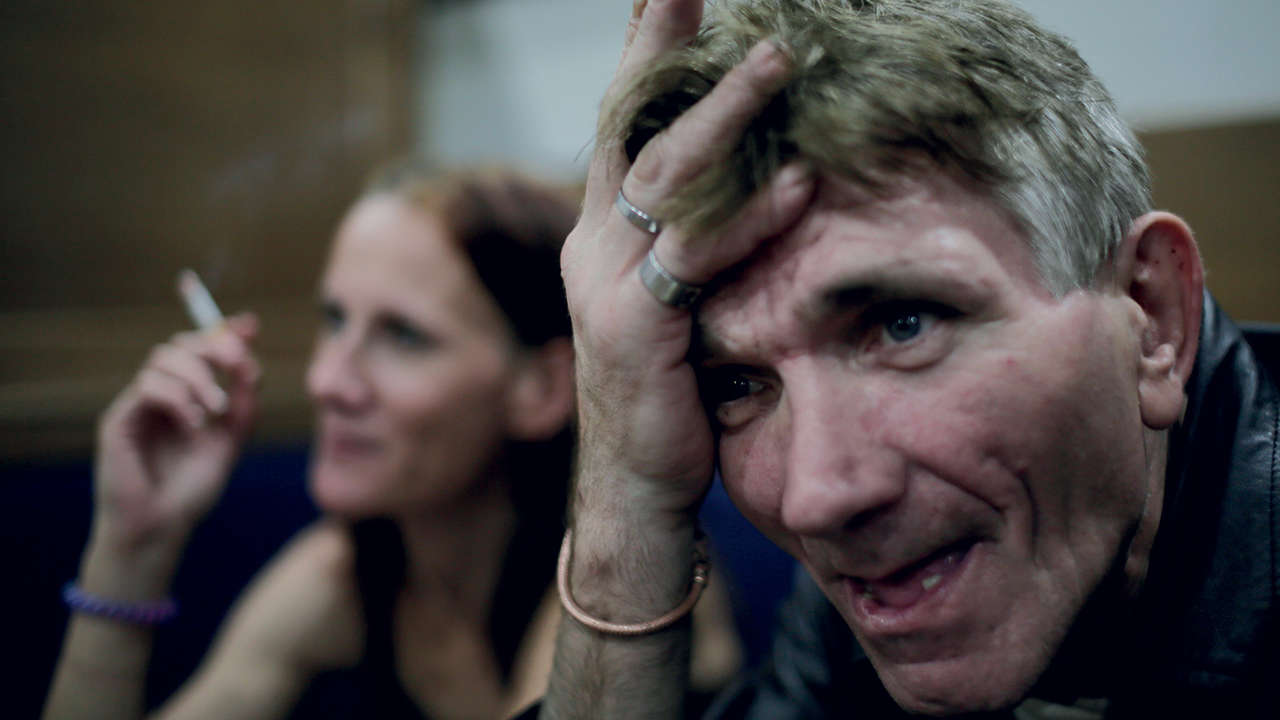
“There is a strong tradition of auteur documentary in this country. Some are very good, many are at least provocative, engaged, cheeky, comical, experimental, or ruthless — even toward the audience sometimes,” said Tasovská. She added that the Czech Republic had been lacking documentaries that could make their mark internationally, and that HBO Europe was set on changing that.
And it isn’t just HBO. The number of international coproductions is growing, with many films taking part in platforms and workshops geared toward international intelligibility. Alena Müllerová of Czech TV
points to a series of portraits coproduced with the Strasbourg branch of ARTE. “Life According to Václav Havel was sold to Japan and nominated for the Prix Europa,” she says of the first such project, directed by Andrea Sedláčková. A portrait of Tomáš Baťa, directed by Peter Kerekeš, is currently in production, and next to come is a film by Helena Třeštíková about Madeleine Albright.
Always Together, Eva Tomanová’s nonfiction portrait of an alternative family living with their nine children “outside the system,” bears a surprising number of similarities to the current American indie hit Captain Fantastic. Tomanová workshopped her film at Ex Oriente and screened it two years ago at IDFA.
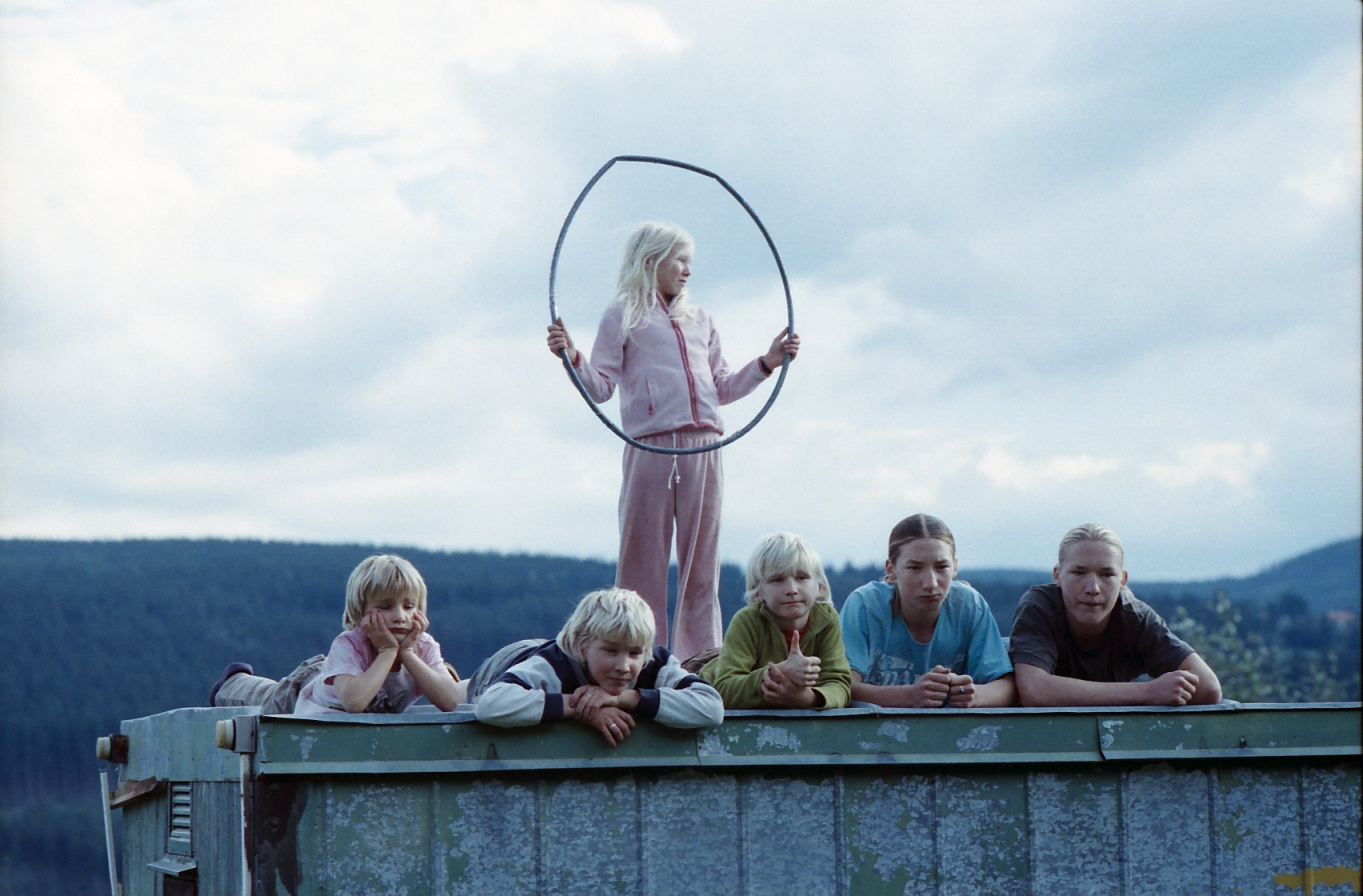
For their part, “pranksters” Klusák and Remunda, with their outfit Hypermarket Film, produce and direct not only a variety of formats for public and commercial television, but also films by their colleagues — such as Vitaly Mansky’s remarkable Under the Sun, about life in North Korea. This chilling look at a society where everything is in the hands of the regime has received distribution deals abroad, including North America. Influenced by Klusák and Remunda’s comic yet politically engaged documentaries, in which the
filmmakers are performers, Czech nonfiction directors moved away from the poetic, humanistic aesthetics of the older generation. Now newcomers like Petr Hátle and Lukáš Kokeš are setting themselves apart from the second generation’s situational comedy by emphasizing the visual aspect, adopting a more serious tone, and drawing inspiration from observational drama.
Still, many auteurs don’t shy away from poetic vision. Miroslav Janek’s portraits of iconic political dissidents and figures of the former Czechoslovak underground display great empathy, but he also shows a sensitive touch in portraying the world of blind and autistic children. His Citizen Havel follows the political and private dramas of former Czech president Václav Havel, and in Olga, he created an intimate portrait of Havel’s deceased wife. “Janek has a remarkable ability to see the world through the eyes of the portrayed,” says Alena Müllerová. “He creates conditions where his protagonists feel that they can act naturally.”
In competition at this year’s festival in Karlovy Vary, Janek presented his latest work, Normal Autistic Film, proving that humor in Czech documentaries can take many forms. His child protagonists don’t come off as ill or disabled, but rather as people whose view of the world can be enriching for all of us.
Employing sophisticated editing with carefully framed static imagery, Pavel Abrahám and Tomáš Bojar juxtapose humor, a broad social perspective and soccer in their film Two to Zero. Following a match between the two biggest rivals in Czech soccer, Sparta and Slavia, their static cameras capture only the stands — from radical fans and the VIP section to security guards and a pair of disgruntled Italians.
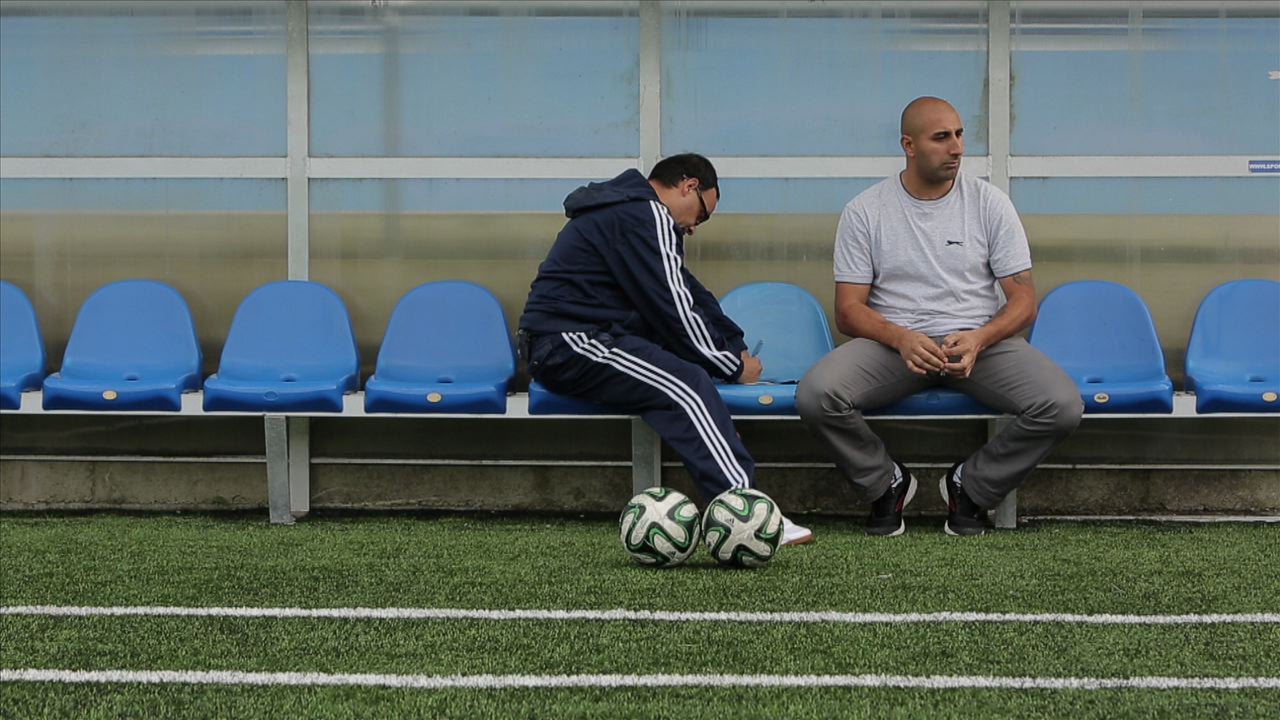
Bojar returned to the world of soccer from a unique and humorous perspective again in his film FC Roma, with Rozálie Kohoutová, which premiered at Karlovy Vary this year. The HBO production spends one season following a Roma soccer team that no one is willing to pay. Klára Tasovská describes it as “a lightly comic look at Czech racism.” In another HBO project, When the War Comes, Jan Gebert gives nationalism a serious treatment as he follows paramilitary units in Slovakia that are preparing for “the clash of civilizations.”
Finally, in recent years, Dan Přibáň’s series of globetrotting expeditions undertaken in the yellow East German–made automobile known as the Trabant, has become a phenomenon unto itself. This extremely
successful crowdfunded project is distinct from the decidedly auteur works discussed above. Nevertheless, its protagonist and director has proven that with new technology and means of funding and distribution, there is a whole new way of making documentaries nowadays.


